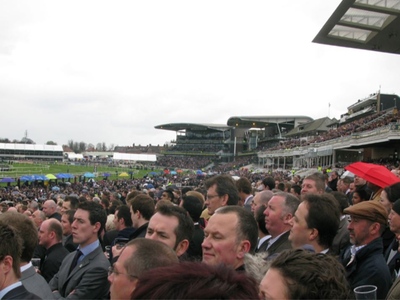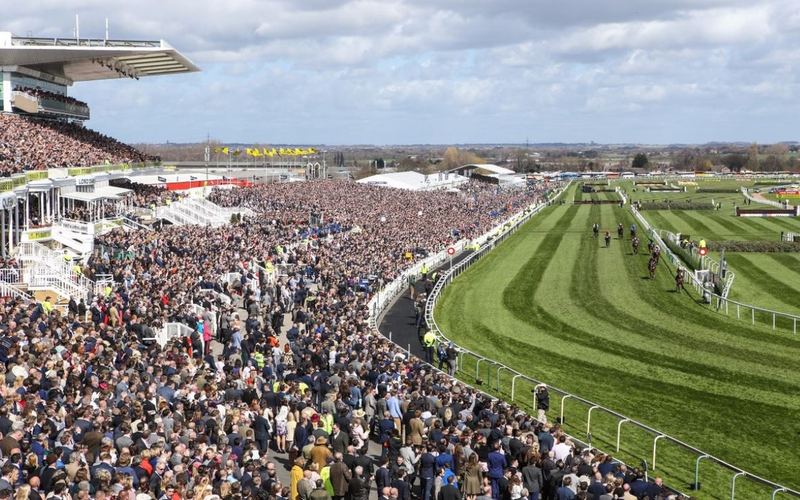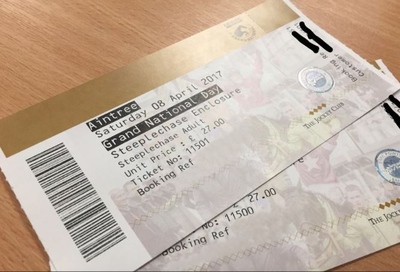
The Grand National at Aintree attracts more betting action than any other race on the calendar, and that isn’t looking likely to change any time soon.
That said, even the mighty Grand National festival is not safe from the issues facing the horse racing industry, in fact, just before the 2024 festival, The Jockey Club announced they were reducing prize money contributions due to falling attendances up and down the country. This would impact the Grand National the year later.
So yes, it is still the most popular race in the sport, but in terms of the Grand National’s attendance figures, there is a worrying downward trend that organisers will want to turn around as quickly as possible.
With a maximum capacity of 70,000 per day, the 3 day festival is capable of hosting 210,000 people, although it never does, but the attendance figures have changed over the years, and that is what I am going to be looking into in this article.
Using data from the Horse Race Betting Levy Board, I’m going to explore how the Grand National attendance has changed, why it has changed, and whether or not it ever sells out.
How Attendance at the Grand National Has Changed

Believe it or not, once upon a time the Grand National was so badly attended that it was in danger of being retired. Yes, the race that an estimated 500 million people around the world watch today, would not exist at all.
After several decades of bad management by Mirabel Topham – who even tried to sell Aintree to developers for housing – the Grand National was not living up to its name, and it was about to hit a new low.
Just 9,000 people attended the big day in 1975, thanks to the new owner of Aintree, Bill Davies, tripling the admission price while its reputation remained in the doldrums. Ladbrokes had to step in to save the day by running the Grand National festival on his behalf.
Attendances picked up slowly over the following years, until we started to regularly see the 140,000 to 150,000 strong crowds we are used to from the early 2000s onwards:
| Year | Day 1 | Day 2 | Day 3 | Total |
|---|---|---|---|---|
| 2000 | 19,070 | 37,070 | 69,155 | 125,295 |
| 2001 | 17,910 | 33,332 | 57,685 | 108,927 |
| 2002 | 20,566 | 42,788 | 63,511 | 126,865 |
| 2003 | 23,604 | 50,474 | 69,824 | 143,902 |
| 2004 | 27,162 | 50,849 | 71,293 | 149,304 |
| 2005 | 25,858 | 52,919 | 66,513 | 145,290 |
| 2006 | 25,954 | 51,018 | 66,816 | 143,788 |
| 2007 | 26,239 | 49,158 | 65,060 | 140,457 |
| 2008 | 26,594 | 53,288 | 64,944 | 144,826 |
| 2009 | 25,379 | 50,996 | 66,435 | 142,810 |
| 2010 | 27,170 | 53,730 | 65,294 | 146,194 |
| 2011 | 29,216 | 53,319 | 66,476 | 149,011 |
| 2012 | 29,152 | 54,009 | 67,107 | 150,268 |
| 2013 | 27,861 | 45,390 | 65,626 | 138,877 |
| 2014 | 27,996 | 42,534 | 68,004 | 138,534 |
| 2015 | 29,438 | 45,038 | 68,103 | 142,579 |
| 2016 | 30,374 | 47,028 | 63,648 | 141,050 |
| 2017 | 29,536 | 46,636 | 64,300 | 140,472 |
| 2018 | 29,139 | 50,905 | 64,716 | 144,760 |
| 2019 | 27,002 | 49,062 | 63,473 | 139,537 |
| 2020 | Abandoned | Abandoned | Abandoned | Abandoned |
| 2021 | No Crowd | No Crowd | No Crowd | No Crowd |
| 2022 | 26,564 | 47,743 | 64,902 | 139,209 |
| 2023 | 22,806 | 47,653 | 58,227 | 128,686 |
Interestingly, the bulk of the additional attendance since 2000 has come from more people showing up on days 1 and 2 of the festival. Ladies Day in particular has enjoyed a boom in popularity, no doubt in part due to the growing celebrity culture supported by social media and the fact that everyone has a camera in their pocket or handbag.
While Grand National day itself has always been the most popular day of the festival, with an average attendance of 65,505 since 2020, it has seen some ups and downs.
The slightly alarming thing, is that attendances suffered a dip below 140,000 just before covid, and haven’t managed to recover since. That’s 3 years in a row, which hasn’t happened since the 140,000 milestone was first reached (2021 doesn’t count as the races were held behind closed doors).
This should be viewed with perspective though: during the 1990s attendances weren’t even hitting six figures, so the festival is still in much better shape than it used to be.
That said, organisers need to ensure they don’t let things slip.
The Grand National went into decline once before and almost didn’t recover, so the key is stopping the rot before it truly starts.
Does the Grand National Sell Out?
 The record attendance for the Grand National was set way back in 1929 when over 300,000 people swarmed Aintree to watch 66 horses set off – another record. That was the attendance for a single day too, not the whole festival.
The record attendance for the Grand National was set way back in 1929 when over 300,000 people swarmed Aintree to watch 66 horses set off – another record. That was the attendance for a single day too, not the whole festival.
A lot has changed since then of course, and neither of these records will ever be broken due to health and safety rules – for the humans and the horses.
Despite now having a total festival capacity of 210,000, the Grand National festival never sees anywhere near that number of people turn up across the three days.
In recent history, the highest attendance was in 2012 when a shade over 150,000 people travelled to Aintree, leaving room for a good 60,000 more.
So no, the Grand National festival doesn’t ever sell out, but what about on a day by day basis?
You can see from the table above that the first and second days of the festival never sell out either, but day 3 has gotten close on a number of occasions.
Only once in the modern era have more than 70,000 people attended, and that was in 2004 when Aintree welcomed 71,293 people through the gates on Grand National day. However, it’s never happened since, and with the maximum capacity being lowered to 70,000 it wouldn’t be allowed anyway.
The last time it was even close was in 2015 when a little over 68,000 attended the final day of the festival, so it’s probably safe to say no single day sells out either.
Certain stands at the ground do frequently sell out though, so if you are hoping to attend and experience a little more of the VIP treatment, you will want to book your tickets early.
